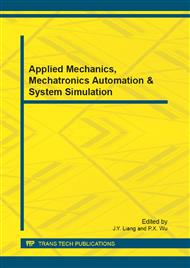[1]
Xin Shen, Song Sun and Guang-Tao Zhang, 2008. Optical Plankton Counter (OPC): Precision Control, Oceanologia ET Limnologia Sinica, 39(4): 341-347. (In Chinese).
Google Scholar
[2]
Zhang WuChang and Wang ke, 2001. An Introduction to the Continuous Zooplankton Sampling or Counting Apparatus, Marine Sciences, 25(5): 14-17. (In Chinese).
Google Scholar
[3]
J. S. Jaffe, 2005. Sensing Plankton: Acoustics and Optical Imaging, (book chapter), European Workshop on Harmful Algal Blooms.
Google Scholar
[4]
De Robertis, A, 2001, Validation of acoustic echo counting for studies of zooplankton behavior, ICESJ. of Marine Science, 58.
Google Scholar
[5]
C. N. Flagg and S. L. Smith, 1989, on the use of the Acoustic Doppler current profiler to measure Zooplankton abundance, Deep Sea Res. 36.
DOI: 10.1016/0198-0149(89)90047-2
Google Scholar
[6]
P.H. Wiebe, T.K. Stanton, C.H. Greene, M.C. Ben. H.M. Sosik, T.C. Austin, J.D. Warren, T. Hammer, 2002. BIOMAPER-II: An integrated instrument platform for coupled biological and physical measurements in coastal and oceanic regimes, IEEE Journal of Oceanic Engineering, 27(3).
DOI: 10.1109/joe.2002.1040951
Google Scholar
[7]
C.S. Davis S.M. Gallager,M. Marra W.K. Stewart, 1996. Rapidvisualization of plankton abundance and taxonomic composition using the video plankton recorder, Deep-Sea Research Part II-Topical Studies in Oceanography, 43, 7-8.
DOI: 10.1016/s0967-0645(96)00051-3
Google Scholar
[8]
M.C. Ben. eld, C.J. Schwehm and S.F. Keenan, 2001. ZOOVIS: a high resolution digital camera system for quantifying zooplankton abundance and environmental data, American Society of Limnology and Oceanog aphy, Aquatic Sciences Meeting, Alburquerque, NM, February, 12-17.
Google Scholar
[9]
Byh. Sun, P.W. Benzie, N. Burns, D.C. Hendry, M.A. Player and J. Watson, 2008, Underwater digital holography for studies of marine plankton, Phil. Trans. R. Soc. A 366, 17.
DOI: 10.1098/rsta.2007.2187
Google Scholar


